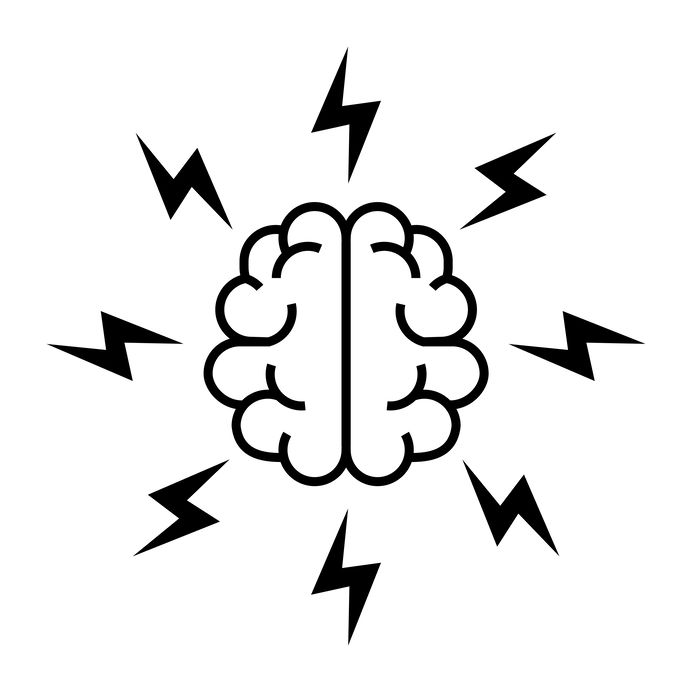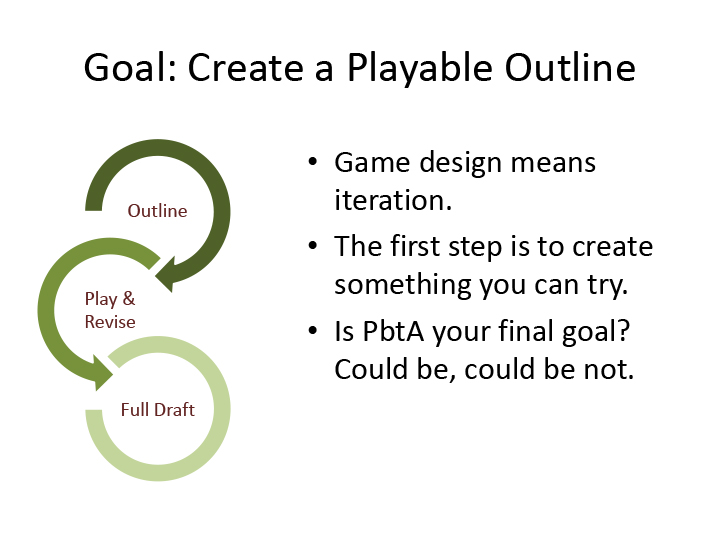Using Apocalypse World to Outline and Draft Your Own RPG
Here in Part 7, I’m setting aside some time for a good old straightforward Q&A.
I’ve gotten enough questions, and they’re challenging enough, that taking them in rounds. Here’s round 3: the lightning round!
This article was made possible by the generous support of my patrons. Please consider joining them by supporting me on Patreon.
Ready set go!
Q:
Are there any genres that PbtA is ill suited for? Media genres, that is. Game genres I see analyzed more often.
@the_gamenomicon
I don’t think so.
I think that there are lots of genres that the stock ttrpg format is ill suited for. Making a romantic comedy rpg, for instance, always requires you to break out of the stock ttrpg format, PbtA or not.
H/T Breaking the Ice by Emily Care Boss, as always!
For a while, the going theory was that PbtA wasn’t good for superheroes, then three superhero PbtA games came out in two years. After that, it wasn’t good for science fiction, and now there are several solid SF PbtA games. There are horror PbtA games, romance PbtA games, fantasy PbtA games in a number of subgenres, slice of life PbtA games…
No whodunit PbtA games yet that I know of, but give it time.
edit: It turns out, Brindlewood Bay! And the forthcoming Apocalypse Keys. So, yep.
Q:
What’s the most common question you are asked about PbtA?
@Mease19
I was wracking my brain, but then I realized that there’s a clear frontrunner, a question that Meg and I have been asked literally hundreds of times: “I’m making a PbtA game and I understand that I need your permission to use the PbtA logo. May I?”
Q:
What are design choices you like finding in PbtA games?
What are design decisions you dislike finding in PbtA games?
@Lexwitchrpg
This is a hard question for me, because what I like is just, I like to find a game where the weird, often very weird vision of the creator shows through.
This makes me like some PbtA games that are panned by the PbtA mainstream, like tremulus and Farflung.
(Dear Internet, please don’t reply to this just to tell me about games you don’t like! Sincerely, Vincent)
Actually there is one thing that, I don’t automatically dislike it, but it makes me look harder at the game to figure out if it was a good choice: moves where you choose which stat to roll, but it’s not “your best stat” or “your worst stat.”
Take a general “get out of trouble” type move. I think that for most of the trouble my character might get into, we’d all agree that being cool might help them out, being hard might, being hot might, being sharp might, being weird might — so whatever. Just let me roll my best stat, don’t contrive it as a choice I have to make depending on my approach to the problem. Or else, please, give rolling the different stats different material consequences, so it matters which I choose.
Q:
What is your position about pre-defined maps, tokens and assets for PBTA games? It might help to players and GM to clarify positions and the scene but it also might break the philosophy of improvisation and creation by players. What do you think?
@Levillator
I think they’re just fine! I don’t think they’re different from dice, or from paper playbooks with numbers and writing on them, for instance. Use them thoughtfully and they’ll enhance your experience, not break it.
Q:
What do you think is the role of Advanced Moves?
@Lexwitchrpg
I can’t speak for other games that include them, but in Apocalypse World, their entire role is to help bring the game to an end!
Q:
What should be covered by a move, and what shouldn’t? Where do you need specific rules and when can you leave it to not-strictly-mechanized roleplaying?
@HeadOfTheGoat
The answer’s easy but many rpg designers look for it in the wrong place, in the game’s fictional material and proceedings instead of at the real-world table.
You need specific rules when the players and GM are going to have a hard time coming to a quick, natural agreement about what’s happening next. Generally, when one person’s investments and interests come into contact with another’s, and nobody’s made sure that they’re aligned before they touch.
Lots of the specific times are the obvious ones — characters in a fight, characters negotiating about something that matters to both people, changes to someone’s character sheet — but every game’ll have a couple of trouble spots that you wouldn’t predict, so keep an eye out for them!
Q:
What is the biggest weakness of PbtA as a system or philosophy in your opinion?
@mixmastermind
In my opinion: what the PbtA system or philosophy wants you to do is, it wants you to create a whole new game.
It won’t help you adapt a game in play — it thinks you should make a new game instead. It won’t even really help you make new playbooks or things for existing games — it thinks that those games are already finished.
In other ttrpg systems and philosophies, you can have a lot of excellent design fun building onto, adapting, expanding, and creating modules for existing games. PbtA, the whole time, it’ll be tapping its fingers and checking its phone, waiting for you to make a new game instead.
Q:
How many moves are too many in a PbtA game?
@iamfelixrios
And how many are too few?
@musiconator
The best number of moves is 5 or 7. But, you know, to make a game, you have to compromise.
If your game needs 100, it needs 100.
Q:
Is it considered a real session of PbtA if the MC has prepared a previous backstory, à la Spirit of 77?
@OtherCynicalGuy
Of course!
So first of all, different PbtA games have different rules for what the MC should and shouldn’t prepare, there are no set standards. But even in Apocalypse World and the games that stick closely to it, the rule is that the MC absolutely must not prepare a storyline going forward from the start of play. A backstory’s fine.
Q:
how, exactly, does the apocalypse produce power, anyway? is it green energy?
@fnord3125
Psychic brain energy!

More questions?
Please ask! It’ll be my pleasure to answer.
Thanks, everyone!
Past Installments:
- Back in Part 1, I laid out Apocalypse World’s philosophy and foundation, described the fit and purpose of its systems, and talked about which features are central to its workings and which aren’t.
- Then in Part 2, I walked through the beginnings of taking Apocalypse World’s parts and using them as the basis for a whole new game.
- In Part 3, I dived back into Apocalypse World’s basic moves. I went through them one by one to talk about how and why they work the way they do.
- In Part 4, I talked about playbooks, by request. What are they, do you want them in your game, and what are the alternatives?
- In Part 5, I took a quick aside to talk about some different ways that moves can fit into the conversation of play.
- In Part 6, I used an Ursula K. LeGuin quote — you probably already know the one! — as an outline for alternative models to Apocalypse World’s model of conflict.
- Part 7: Q&A Round 1. Q&A Round 2.
Next Installments:
- Q&A Round 4: the Final Round!
- In Part 8, I share my six best, most reliable tricks for drafting interesting moves.
- In Part 9, I lay some groundwork for the idea of underlying models by pointing out a crucial feature of Apocalypse World.
- In Part 10, I develop the idea of underlying models further, with 2 solid examples and 1 tentative one.
- In Part 11, I explore a few of the dice systems we’ve used in our PbtA games.
Reminder: The Goal is to Create a Playable Outline


Probabilities of 2d6 Compared to d6 Dice Pools – Troy Press says:
[…] for Characters in Old School RPGs] and used the standard 2d6+stat dice mechanic. Now Vincent Baker recently wrote about what he sees as the biggest weakness of PbtA: “What the PbtA system or philosophy wants you […]
Kult: Divinity Lost [anml.] – Pjaltekongen says:
[…] Adspurgt om PbtA’s største svaghed som system eller filosofi, svarer Vincent Baker (i artikelserien om PbtA, afsnit 7): […]